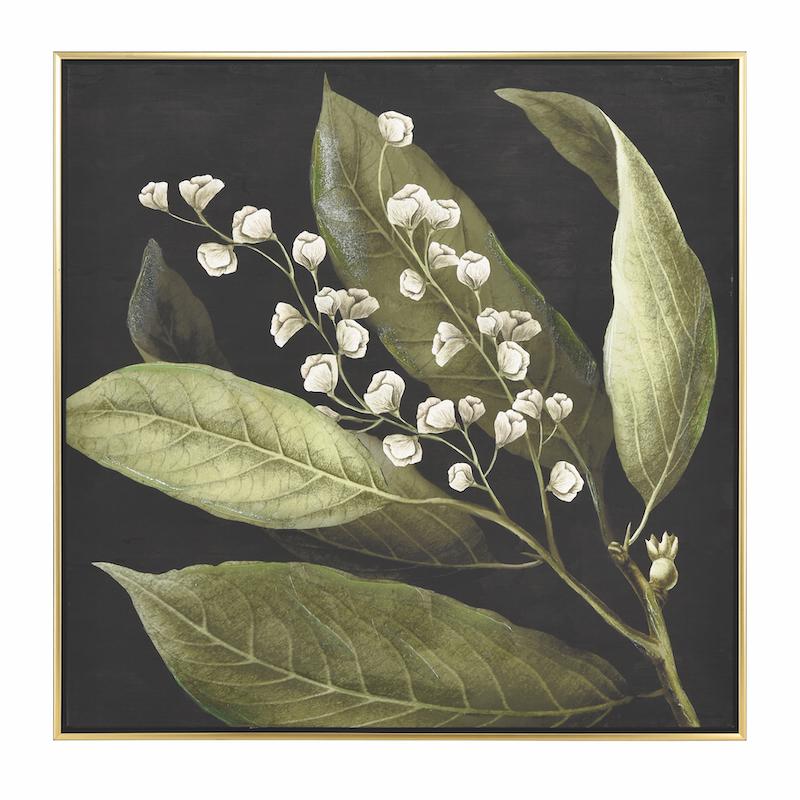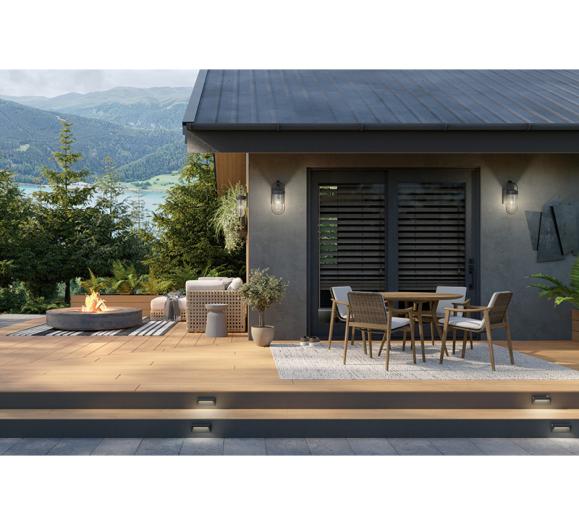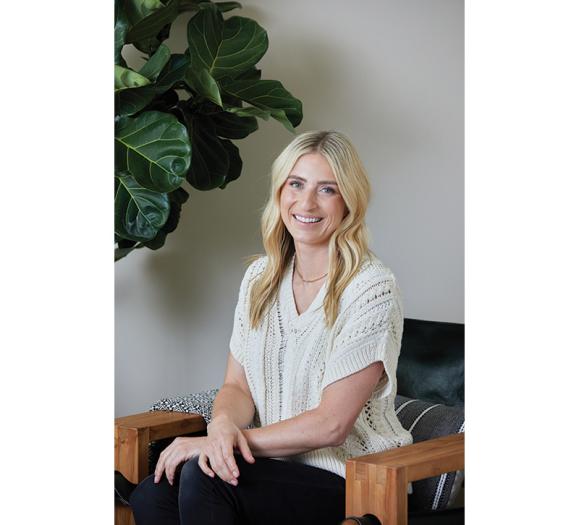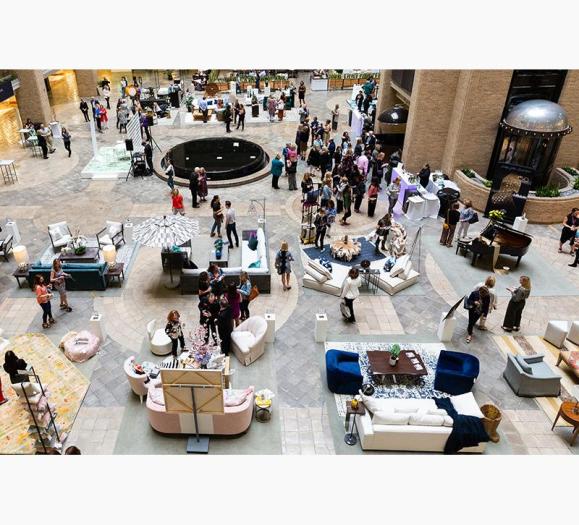Whatever the category, the trend toward home furnishings inspired by flora and fauna continues to resonate with consumers. While inspired by nature is a trend that has stood the test of time, the demand for pieces that warm up the home through such motifs as flowers, leaves and landscapes — sometimes envisioned in abstract or unique ways — as well as pieces constructed with natural materials and forms continues to grow. Jason Phillips, Vice President of Marketing at Phillips Collection, calls this “Flor-apy,” short for floral therapy.
“Designers and retailers are looking for this exact category,” says Phillips. “Some of it comes from the movement of outdoors becoming real living space for consumers. They want to bring the outdoors into the home in some way.”
For Phillips, it’s a matter of consumer demand catching up with what the home furnishings company has always done, as founder Mark Phillips has built his sustainability- and biophilia-focused decor company by using found objects, materials in their natural state and inspiration from nature in much of what the company produces. “My father, Mark, curates and discovers off-the-beaten-path elements and senses opportunities in what others might consider waste. We then put our marketing caps on to make [these found elements] into art statements,” he continues.
Phillips covers the gamut of furniture and decor; however, the company has seen a rise in sales of wall art in the past couple of years — sculptural, natural materials or mixed media — that is resonating with the buyer who wants unique and often natural influences in their homes.
Opportunity Knocks
While Phillips has built its company’s foundation on elevating the natural elements of home furnishings, for other decor companies, this consumer lean into nature has presented opportunities for growth in decor categories. From sculpture to wall art, flowers, leaves, insects and more are finding their way onto retail shelves and the walls and surfaces of consumer’s homes.
“Art is a great way for someone to update their space with a minimal investment. It can completely change the look of a room,” says Elk Home Creative Director Sonja Urich. “We’ve had a great response to our art,” in which — whether framed abstract, painterly, realistic or sculptural — natural materials and motifs are high on consumers’ list of choices. While Urich says she sees framed art getting larger, the company is also focusing on smaller framed and sculptural art pieces that can be grouped or used individually. “We’re seeing more interest in smaller format art that comes in sets of three or four,” Urich notes. “You can do a montage of multiple pieces and make a huge statement or use one piece in smaller alcoves and spaces. You want to give the end user flexibility.”
For Elk Home, while those organic pieces have been on the radar for some time, the trend hasn’t peaked with mainstream yet, so there’s still a lot of opportunity out there, she continues.
Elk Home has expanded from its lighting foundation into accent furniture and decor in recent years, creating a one-stop shopping experience for its customers. Decor, particularly in the wall art space, has been an area of growth. For dimensional art created with or inspired by nature, pieces that are flexible, where they can be hung in multiple ways or work on a table as well, gives buyers choices in how the pieces fit into the home or can be merchandised at retail. Using a variety of materials on natural motifs — metals, ceramics or resin, for example — in addition to organic materials, such as wood, allows these biophilic pieces to transcend over-arching design trends, working in modern, rustic or traditional spaces. “Art is a great way for someone to update their space with minimal investment. It can completely change the look of a room,” Urich notes.
At Sagebrook Home, Vice President of Merchandising Kelli Cohen, agrees that consumers are using nature-inspired motifs and materials to create art focal points in their homes. While not necessarily as much in the large-scale art Sagebrook offers, Cohen is also seeing this trend toward more natural themes in smaller decor, where someone might incorporate one or more sculptural pieces such as butterflies or beetles or some other animal to create a collage effect on a wall.
Cohen is also seeing a resurrection of leaves in wall art, primarily tropical. “It’s an aesthetic that has gained traction,” she says. “We do find ourselves showing our buyers how to use these pieces and help them with merchandising.” Cohen also sees a mix of natural and other materials trending with buyers as they look to bring in natural elements in unique ways. With natural elements, wood in particular, there are so many finishes, consumers are still able to satisfy their preferences. “Wood is one of the biggest drivers across all categories,” Cohen says.
Driving Forces
These decor suppliers say the consumer’s gravitation toward natural materials could go deeper than just preference, however. Particularly with younger generations, there’s also a rising consciousness around sustainability, and natural materials check that box. “Sustainability is a big piece of the business,” Cohen notes, adding that it’s about sustaining a lifestyle as well as the environment. Being surrounded by natural elements can imbue serenity.
For Phillips Collection, sustainability is a mainstay of the company’s business model. “Consumers are looking for things that are tactile, honest. They want to align with making greener decisions,” Phillips says. “We have a legitimate story of sustainability. We don’t worry about imperfections. We can use it all.”
Whatever the reason for the consumer’s lean toward these nature-driven pieces, suppliers agree this is a trend that’s here to stay for the foreseeable future. “When they are spending more time in their homes, people want softer surroundings,” Phillips notes. Organic materials and nature-inspired motifs tap into that.







